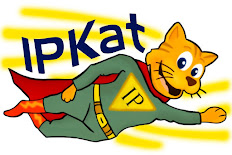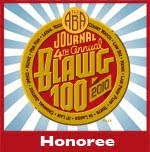Following a thoroughly well-deserved and very much appreciated coffee break, Mark Owen (Taylor Wessing) took over the chair and introduced Kenneth Wilton (Seyfarth Shaw LLP). Kenneth continued the "Trademarks and Designs" overlap by giving an explanation of trade dress and product configuration in the United States. Trade dress use, and thus protection, is limited by geography -- which was pretty useful in the previous century but less so in the era of the internet. There is a presumption of distinctiveness once trade dress has been used for five years, but survey evidence is advisable if registration is to be secured.
 To gain registration and to press for enforcement, it's important to be able to articulate the precise form that the trade dress takes, which means the essential features comprising it have to be expressed in words. You also have to establish, looking at the object of protection in its entirety, whether it is functional or ornamental. A surprising range of designs have been protected as trade dress, including the Google search engine interface (with the word "Google" in dotted lines since it may be represented in many different forms).
To gain registration and to press for enforcement, it's important to be able to articulate the precise form that the trade dress takes, which means the essential features comprising it have to be expressed in words. You also have to establish, looking at the object of protection in its entirety, whether it is functional or ornamental. A surprising range of designs have been protected as trade dress, including the Google search engine interface (with the word "Google" in dotted lines since it may be represented in many different forms).
Since 1980 it hasn't been necessary to claim the entire object; you can now subdivide protection between different parts of the same article. Examples of part protection that have been effective in court include the Appple iPhone design patent, which was successfully litigated against Samsung.
Kenneth finished with some comments on enforcement and remedies. Design patent damages are usually based on a licensee's royalties, but it's also possible to recover the infringer's profits.
Kenneth was followed by Anna Carboni (Redd solicitors), on the hypothetical "2JuicyLucy (t/a 2Juice) v DoubleJuice, Inc" dispute. This part of the programme, in which an Australian business took exception to a product made by an American company, had to be experienced in person in order to be appreciated to the full. It highlighted the salient issues relating not only to Community trade mark and Community design protection and infringement but also to jurisdiction:
Anna reminded us that jurisdiction based on the place of infringement would be national-only in its effect while jurisdiction founded on any other basis could award pan-European injunctive relief subject to anything the Court of Justice said in Case C-235/09 DHL France v Chronopost [noted by the IPKat here]. She also looked at the dispute from the standpoint of the defendant, mentioning the possibility of bringing an action for groundless threats (useful if you think the claimant doesn't have the right to threaten to sue you in the first place), as well as going for a submarine motion such as a declaration of non-infringement (forum-shopping should not be forgotten either).
Daniel Greif (Siam Premier International, Thailand) then spoke about the design/trade mark divide in the Asia Pacific zone. Technically, trade dress and 3D marks can be registered almost everywhere in the region -- though whether that happens in practice may be another matter. Dan's perspective was mainly based on the need to help clients formulate a regional IP policy. Filing trade marks, which may require evidence of extensive use, is usually the first step, he said, then led the audience through the basics of design mark registration in Thailand and Myanmar. Even 120 years of use of the Maggi bottle, right, was not enough to get it registered in Thailand. All in all, the news from Thailand seemed quite grim. Dan then took us on a fascinating tour of Coca-Cola Contour bottles as registered in all sorts of countries, together with an account of the quantity of evidence and the format of depiction of the bottle in different jurisdictions.
Turning then to Myanmar, this country of 60 million people has just had its sanctions lifted by the US and is now booming, as businesses regard it as one of the last frontiers for IP protection. The country has never had patent, trade mark or design protection laws (though it has had some copyright law). Since there is no substantive examination, anything and everything has been "registered" -- via publication in a local newspaper, it seems. A new law will shortly be implemented, but it will be a mess, even with assistance from WIPO.
Happier news came in the form of examples of protection in Australia, New Zealand, Japan and Vietnam, where product design registration laws are more sophisticated.
The final speaker of the day was Louis Vuitton's Valerie Sonnier [who also spoke at INTA's Academic Lunch in Hong Kong this year] -- the first in-houser to speak today. Valerie spoke from the point of view of a lawyer whose employer was in business to make money and who was engaged in trying to stamp out criminal organisations which make and sell counterfeits. Over 30,000 IP infringements have been launched this year and some 100,000 websites shut down. She also indicated the sort of damages LV might recoup in respect of successful infringement actions in France. The sums might sound big but, in relation to the cost of enforcement, they are nothing. If France had better facilities for ordering discovery, LV would be able to recover far more.
Valerie then continued her world tour. In Italy, LV gets good decisions, but they're so slow. In the US and in China (here, contrary to normal expectations), results have been very good. Suing both a luxury hotel and one of its retail tenants turned out to be a good move. However, counterfeiters are becoming better informed and are more legally savvy. This makes it imperative for LV to work well with local IP offices and enforcement agencies in order to retain the initiative.
Axel Nordemann then closed the day with his warm thanks to all participants. Time fordrinks! further reflection ...
 To gain registration and to press for enforcement, it's important to be able to articulate the precise form that the trade dress takes, which means the essential features comprising it have to be expressed in words. You also have to establish, looking at the object of protection in its entirety, whether it is functional or ornamental. A surprising range of designs have been protected as trade dress, including the Google search engine interface (with the word "Google" in dotted lines since it may be represented in many different forms).
To gain registration and to press for enforcement, it's important to be able to articulate the precise form that the trade dress takes, which means the essential features comprising it have to be expressed in words. You also have to establish, looking at the object of protection in its entirety, whether it is functional or ornamental. A surprising range of designs have been protected as trade dress, including the Google search engine interface (with the word "Google" in dotted lines since it may be represented in many different forms).Since 1980 it hasn't been necessary to claim the entire object; you can now subdivide protection between different parts of the same article. Examples of part protection that have been effective in court include the Appple iPhone design patent, which was successfully litigated against Samsung.
Kenneth finished with some comments on enforcement and remedies. Design patent damages are usually based on a licensee's royalties, but it's also possible to recover the infringer's profits.
Kenneth was followed by Anna Carboni (Redd solicitors), on the hypothetical "2JuicyLucy (t/a 2Juice) v DoubleJuice, Inc" dispute. This part of the programme, in which an Australian business took exception to a product made by an American company, had to be experienced in person in order to be appreciated to the full. It highlighted the salient issues relating not only to Community trade mark and Community design protection and infringement but also to jurisdiction:
Anna reminded us that jurisdiction based on the place of infringement would be national-only in its effect while jurisdiction founded on any other basis could award pan-European injunctive relief subject to anything the Court of Justice said in Case C-235/09 DHL France v Chronopost [noted by the IPKat here]. She also looked at the dispute from the standpoint of the defendant, mentioning the possibility of bringing an action for groundless threats (useful if you think the claimant doesn't have the right to threaten to sue you in the first place), as well as going for a submarine motion such as a declaration of non-infringement (forum-shopping should not be forgotten either).
Turning then to Myanmar, this country of 60 million people has just had its sanctions lifted by the US and is now booming, as businesses regard it as one of the last frontiers for IP protection. The country has never had patent, trade mark or design protection laws (though it has had some copyright law). Since there is no substantive examination, anything and everything has been "registered" -- via publication in a local newspaper, it seems. A new law will shortly be implemented, but it will be a mess, even with assistance from WIPO.
Happier news came in the form of examples of protection in Australia, New Zealand, Japan and Vietnam, where product design registration laws are more sophisticated.
The final speaker of the day was Louis Vuitton's Valerie Sonnier [who also spoke at INTA's Academic Lunch in Hong Kong this year] -- the first in-houser to speak today. Valerie spoke from the point of view of a lawyer whose employer was in business to make money and who was engaged in trying to stamp out criminal organisations which make and sell counterfeits. Over 30,000 IP infringements have been launched this year and some 100,000 websites shut down. She also indicated the sort of damages LV might recoup in respect of successful infringement actions in France. The sums might sound big but, in relation to the cost of enforcement, they are nothing. If France had better facilities for ordering discovery, LV would be able to recover far more.
Valerie then continued her world tour. In Italy, LV gets good decisions, but they're so slow. In the US and in China (here, contrary to normal expectations), results have been very good. Suing both a luxury hotel and one of its retail tenants turned out to be a good move. However, counterfeiters are becoming better informed and are more legally savvy. This makes it imperative for LV to work well with local IP offices and enforcement agencies in order to retain the initiative.
Axel Nordemann then closed the day with his warm thanks to all participants. Time for
When Trademarks Overlap With Other IP Rights: conference report 5
 Reviewed by Jeremy
on
Monday, December 08, 2014
Rating:
Reviewed by Jeremy
on
Monday, December 08, 2014
Rating:
 Reviewed by Jeremy
on
Monday, December 08, 2014
Rating:
Reviewed by Jeremy
on
Monday, December 08, 2014
Rating:









![[Guest post] Can AI be considered a PHOSITA? Policy debates in the US and the EU](https://blogger.googleusercontent.com/img/b/R29vZ2xl/AVvXsEggxDO6mW5r4n3-06Af5ckmIaMIhzgPJBoDP8AUsSYXY2zajUQt1ObGVn_GhCgidbG_YDVnybQuJ5XoAjjBG9Ws2xJWDQHNPMrLkn526SWIG371X_Kjt1E8tJmn8Ae_20Phyphenhyphen09JeuUOhhTR3aZE9lMRQlqHGQGcAWGxlo91rrKcLk0AfUjWCvw6RQ/s72-c/Two-cats-eating.jpg)












No comments:
All comments must be moderated by a member of the IPKat team before they appear on the blog. Comments will not be allowed if the contravene the IPKat policy that readers' comments should not be obscene or defamatory; they should not consist of ad hominem attacks on members of the blog team or other comment-posters and they should make a constructive contribution to the discussion of the post on which they purport to comment.
It is also the IPKat policy that comments should not be made completely anonymously, and users should use a consistent name or pseudonym (which should not itself be defamatory or obscene, or that of another real person), either in the "identity" field, or at the beginning of the comment. Current practice is to, however, allow a limited number of comments that contravene this policy, provided that the comment has a high degree of relevance and the comment chain does not become too difficult to follow.
Learn more here: http://ipkitten.blogspot.com/p/want-to-complain.html